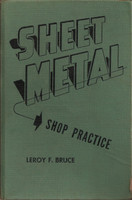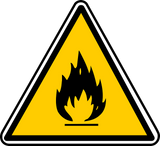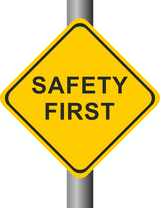Common Injuries and Health Risks of Sheet Metal Fabrication
Sheet metal fabrication is a multi-billion dollar industry with companies throughout the world creating and manipulating large, thin slabs of metal for a variety of purposes. Some people assume there's little risk involved with it, but this isn't the case. Whether you currently work in this industry, or if you're looking to enter it, you should familiarize yourself with the common injuries and health risks of sheet metal fabrication.
Cuts
The edges of sheet metal are oftentimes razor sharp, creating a serious threat for skin lacerations. If a worker happens to run his or her hand across the edges of a piece of sheet metal, it could slice into their skin. Workers must be conscious of where their hands are located at all times, avoiding the sharp edges.
Wearing a pair of cut-resistant gloves is another precautionary step workers can take to help reduce the chance of injury in the sheet fabrication industry. These gloves are designed specifically for sharp edges and objects, offering a valuable layer of protection against common cuts and lacerations.
Burns
Sheet metal is highly conductive of thermal energy, meaning it heats up quickly around open flames or other sources of heat. Touching a piece of hot sheet metal with the bare skin can result in serious burns. This is just one more reason why workers should wear a pair of gloves when touching or handling sheet metal.
Likewise, sheet metal can hold cold thermal energy just as easily as it can heat. If a piece of sheet metal is left outside during the cold winter months, workers should avoid touching it with their bare hands.
Ergonomics
On the official Occupational Health and Safety Administration (OHSA) website, they state:
"Back-injury prevention also is extremely important. Sheet metal is awkward to carry—it is difficult to grip, the sheets are substantial and it generally is cumbersome to carry or move. Whenever possible, sheet metal should be moved mechanically. If it must be moved manually, employees should practice proper lifting procedures and get assistance when needed."
Sheet metal is difficult -- if not impossible -- for a single worker to safely handle. Workers should use machines to move and manipulate it whenever possible.
Respiratory
Of course, there's always the risk of breathing in potentially harmful fumes and/or dust in the sheet metal fabrication industry. Workers should gear up in a professional-grade respirator (dust mask is not sufficient) if they believe heavy metals or toxic chemicals are present.
Recent Posts
-
Fire Safety in the Workplace: What You Need to Know
What steps are you taking to prevent fires in your workplace? According to the U.S. Occupational Saf …Aug 23rd 2023 -
Is It Safe to Go Jogging With a Cold Infection?
If you're suffering from a cold infection, you might be wondering whether it's safe to go jogging. T …Aug 22nd 2023 -
5 Safety Tips to Follow When Using a Powder-Actuated Tool
Powder-actuated tools are commonly used to join materials to steel and concrete. Also known as Hilti …Aug 20th 2023




